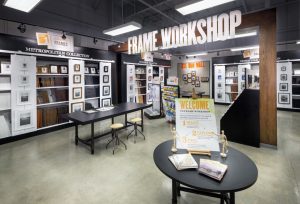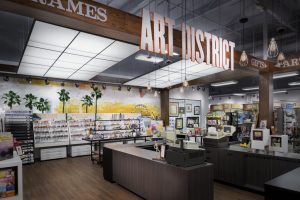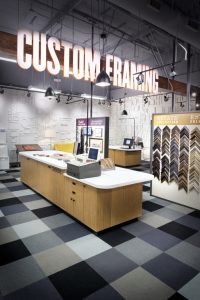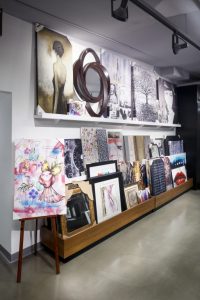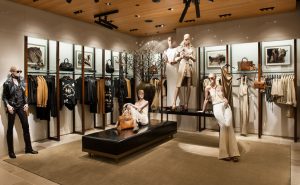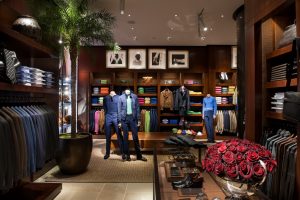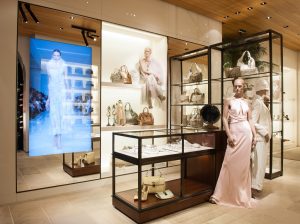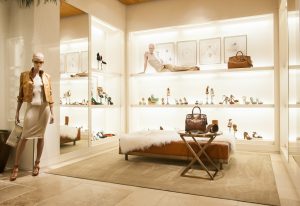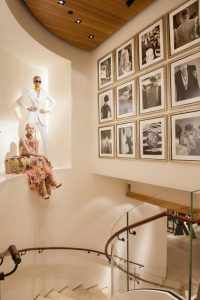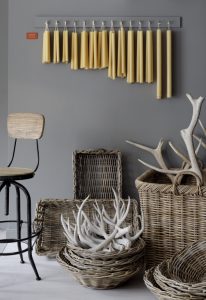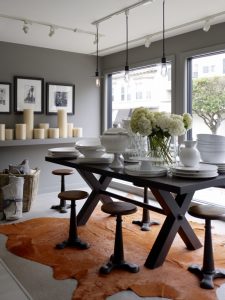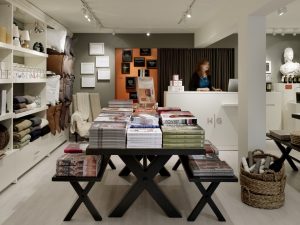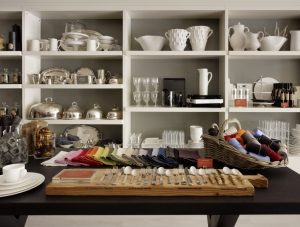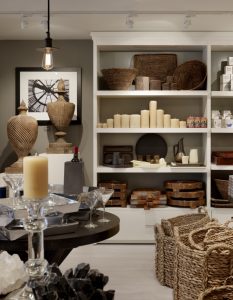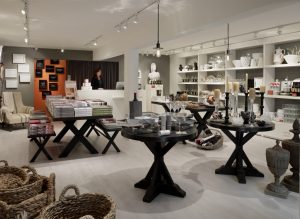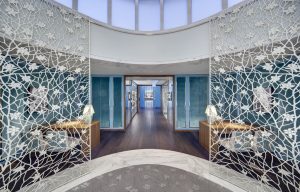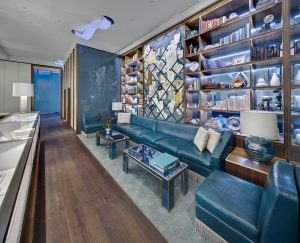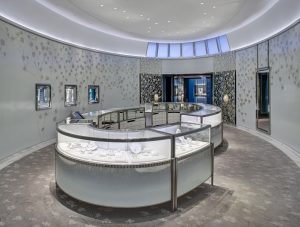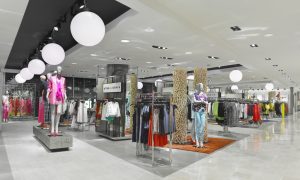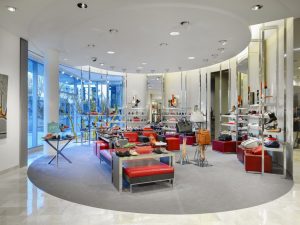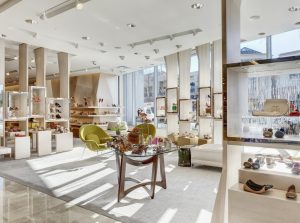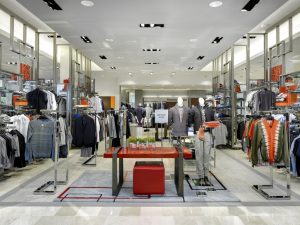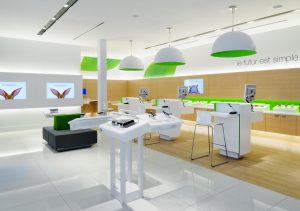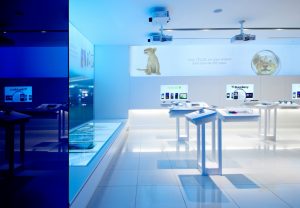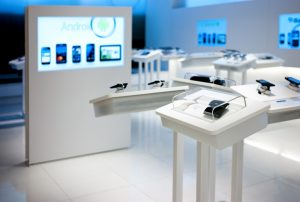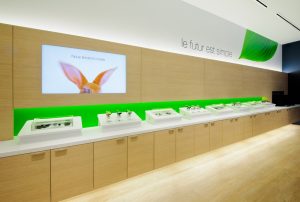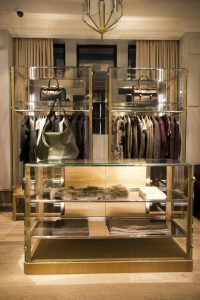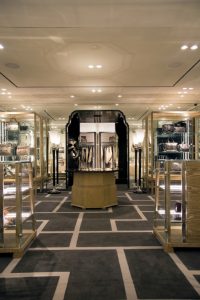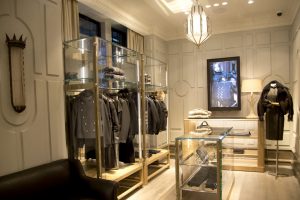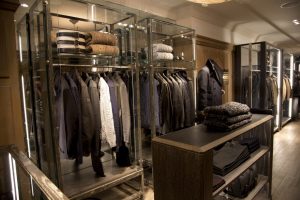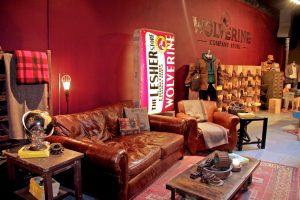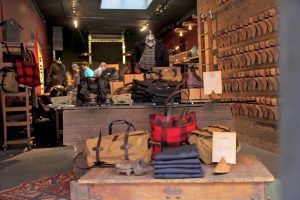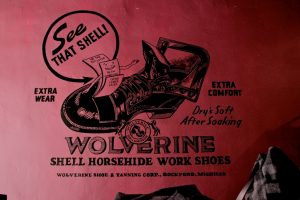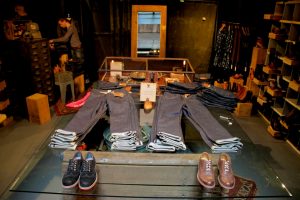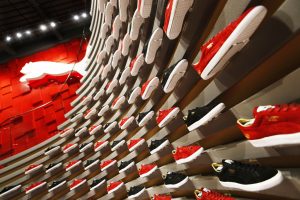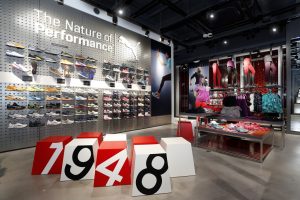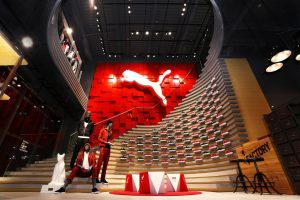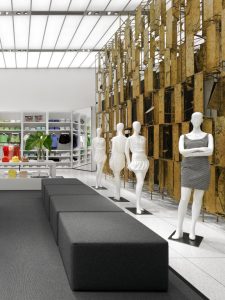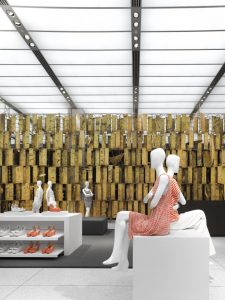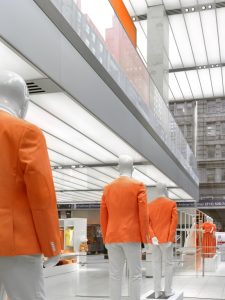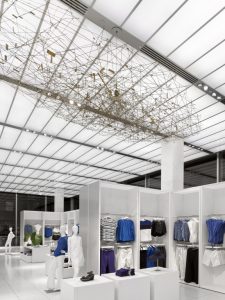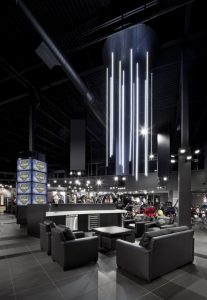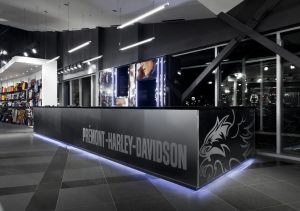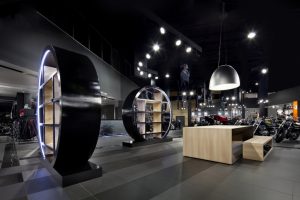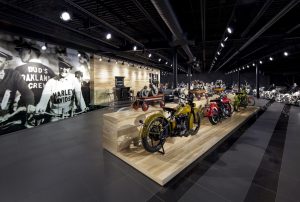The winning projects in this year’s Association of Retail Environments Store Design Awards represented noteworthy innovation, design, creativity and problem-solving. The winning design firms may have had more of a license to innovate, and maybe more budget, too, but they were also asked to make strategic contributions.
It represents a changing era for the design firm industry. Still valued for their design abilities and architectural skills, firms must also be conversant with green building, modern technology, international cultures, merchandise and space planning, brand development and support and shopper psychology.
“In order to have a conversation with a retail client these days, we can’t only talk about the design, signage and fixtures,” says Michael Bodziner, principal at Gensler (San Francisco), which designed the Hudson Grace and Wilkes Bashford stores in San Francisco. (Both locations won Outstanding Merit awards from A.R.E. in their categories.) “Today, it has to be a holistic conversation about everything that space represents.”
Cultural and economic changes in the world are forcing shifts in retail, and consulting firms must adapt, as well. Some of the winning designers tell us that the biggest changes include:
Consolidating Spaces
“One overarching business initiative today is retailers being careful about the size of their stores,” says Charles Sparks of Charles Sparks + Co. (Westchester, Ill.), who designed the Neiman Marcus store in Walnut Creek, Calif., the grand prize winner in the department store category. “Neiman Marcus, for one, has had a new perspective during the slowdown: greater emphasis on controlling costs, expansion plans and renovation plans. They’re expanding into secondary markets, like Walnut Creek and Charlotte, N.C., with downsized stores.”
Advertisement
The recently opened Walnut Creek store is 85,000 square feet on three levels, as opposed to the 180,000-square-foot, three-level store Sparks designed for the retailer in 1999 at the Willow Bend shopping center in Plano, Texas.
Michael Neumann Architecture (MNA; New York), which designed the Ralph Lauren store in Stockholm, an Outstanding Merit winner in its category, is working with Patagonia on two specialty stores in New York. “Instead of the general merchandise store Patagonia already has in New York, it’s experimenting with smaller concepts – a specialty climbing store in the Meatpacking District and a surf store on The Bowery,” says firm principal Jeff Rudy. “It plans to have five different specialty stores in New York eventually.”
Understanding the Consumer Psyche
Downsizing won’t work if the project isn’t aimed directly at the local consumer; thus, everyone involved is being asked to do some homework.
“Localization is really important,” says Gensler’s Bodziner. “Potato stamp roll-outs may work for some retailers, but not for most.” Gensler has recently designed stores for The North Face that have a community feel, creating opportunities for consumers to share their experiences and insights with one another on digital – and actual – bulletin boards.
The challenge is figuring out what makes people say, “I can order it online, but I just want to go to the store to shop.” To know that, Bodziner says, “We need to know pop culture, behavioral trends and human behavior – to do the research that informs the retail strategy.”
Advertisement
International Expansion
“After the recession began, there was a big push by American brands to Asia and those parts of Europe identified as good markets,” says MNA’s Michael Neumann. “But that created special challenges.”
In the case of Ralph Lauren, with whom MNA has been working for 17 years, there’s an overriding aesthetic that doesn’t try to mimic the local vernacular. “Every brand wants an identifiable design,” says MNA principal Barbara Laskey Weinreich. “You have to look at the envelope you’re given and know where you are and how to fit that identity in.”
For Ralph Lauren’s first Scandinavian flagship, the designer chose a historic building a block from the harbor in downtown Stockholm.
“Lauren always looks for architectural distinction and adjacencies to other high-end retailers,” says Laskey Weinreich. Its Stockholm neighbors include the likes of Montblanc, Prada, Gucci and Louis Vuitton.
Though American brands are recognizable around the world, courtesy of the Internet, “we have to interpret the brands in a three-dimensional space to create a real-life embodiment of the brand,” says MNA’s Rudy.
Advertisement
Gensler’s business, too, has been swept up by international expansion. “So,” says Bodziner, “we have 42 locations around the world, staffed with people on the ground we can tap into for local cultures and trends.”
A Gensler office in Bangalore, India, helped the company create a retail prototype for ColorPlus, an Indian version of a Banana Republic-type store. Its team in Shanghai helped introduce The North Face to China.
“It’s a different market,” Bodziner says. “The American consumer is interested in outdoor sports. The Chinese customer likes the fashion aspects of the merchandise. So a U.S. approach wouldn’t have worked there.”
Dealing with the New Technology
“Everyone is trying to solve the riddle of multi-channel,” says Brian Shafley, president of Chute Gerdeman (Columbus, Ohio), which won a category Grand Prize Award for its Aaron Rents art-supply store in West Hollywood, Calif. “It seems every brief or RFP we get requires an omni-channel solution. Every client asks, ‘What do you have in your toolbox, from a technology integration standpoint, to improve the customer experience?’”
Shafley says Chute Gerdeman began hiring people who understand research and consumer analysis. “It’s become a critical component,” he says. “We used to be hired by the retailer’s director of real estate or store design. Now, we’re hired by the ceo’s, and we have to be more conversant with business analytics and productivity modeling.”
“We have a director of digital experience who is an integrated part of our team,” says Gensler’s Bodziner. “It allows us to offer that digital component, not only as part of store design but also as part of the overall retail strategy and the customer service element.”
The strategy would address questions design firms of the 90s never had to ask, like: How do you supplement the digital information shoppers have already downloaded before they come into your store? How do you make the transaction as mobile, direct and efficient as possible? How do you give the sales associates the hand-held tools to service the customer?
It’s all how the design firm business is having to evolve in the second decade of the 21st Century.
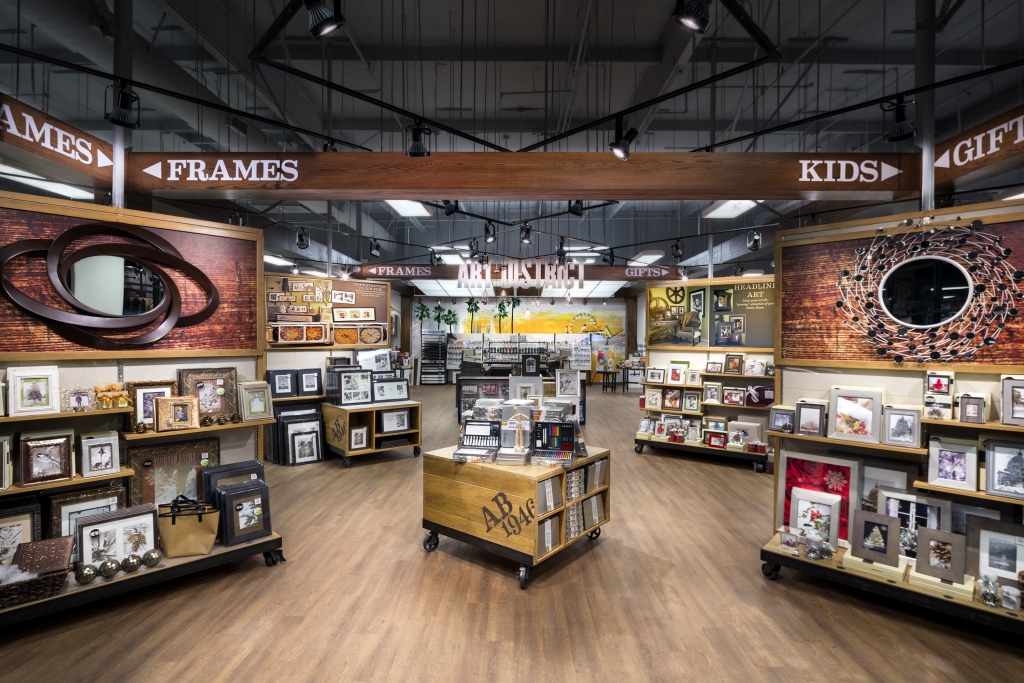

 Headlines1 week ago
Headlines1 week ago
 Photo Gallery1 day ago
Photo Gallery1 day ago
 Headlines2 weeks ago
Headlines2 weeks ago
 Headlines2 weeks ago
Headlines2 weeks ago
 Sector Spotlight1 week ago
Sector Spotlight1 week ago
 Headlines1 week ago
Headlines1 week ago
 Headlines1 week ago
Headlines1 week ago
 Headlines2 days ago
Headlines2 days ago

